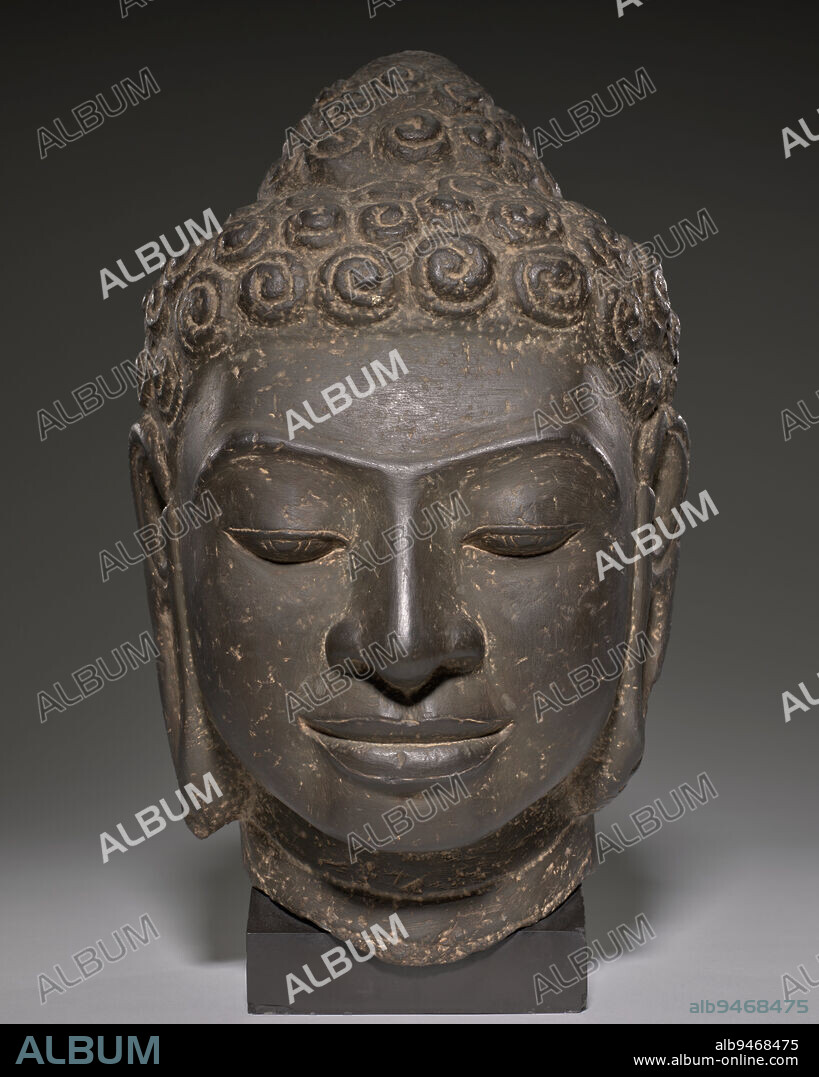alb9468475
Buddha Head, 8th century, 10 1/2 x 8 in. (26.67 x 20.32 cm), Limestone, Cambodia or Thailand, Mon-Dvaravati Style, This Buddha demonstrates a critical innovation of Southeast Asian sculpture: the early translation of established Indian prototypes into distinctly local expressions. The sculptor fully captures the calm bliss of the enlightened being while subtly incorporating the facial features of the indigenous population. Similarly, artists of the Mon-Dvaravati period exaggerated the Buddhas snail-shell curls, an attribute codified in Indian aesthetic treatises; the tight whorls would have had special significance to a culture where shells were valued forms of ornamentation.

|
Añadir a otro lightbox |
|
Añadir a otro lightbox |



¿Ya tienes cuenta? Iniciar sesión
¿No tienes cuenta? Regístrate
Compra esta imagen

Descripción:
Ver traducción automática
Buddha Head, 8th century, 10 1/2 x 8 in. (26.67 x 20.32 cm), Limestone, Cambodia or Thailand, Mon-Dvaravati Style, This Buddha demonstrates a critical innovation of Southeast Asian sculpture: the early translation of established Indian prototypes into distinctly local expressions. The sculptor fully captures the calm bliss of the enlightened being while subtly incorporating the facial features of the indigenous population. Similarly, artists of the Mon-Dvaravati period exaggerated the Buddhas snail-shell curls, an attribute codified in Indian aesthetic treatises; the tight whorls would have had special significance to a culture where shells were valued forms of ornamentation.
Crédito:
Album / quintlox
Autorizaciones:
Modelo: No - Propiedad: No
¿Preguntas relacionadas con los derechos?
¿Preguntas relacionadas con los derechos?
Tamaño imagen:
5121 x 6401 px | 93.8 MB
Tamaño impresión:
43.4 x 54.2 cm | 17.1 x 21.3 in (300 dpi)
Palabras clave:
ARTISTAS • CABEZA BUDA • CALIZA NEGRA • CAMBOYA • CONCHAS • CULTURA • ORNAMENTACIÓN • S. VIII • SIGLO VIII S. VIII OCHO 8 • SIGLO VIII • TAILANDIA
 Pinterest
Pinterest Twitter
Twitter Facebook
Facebook Copiar enlace
Copiar enlace Email
Email
